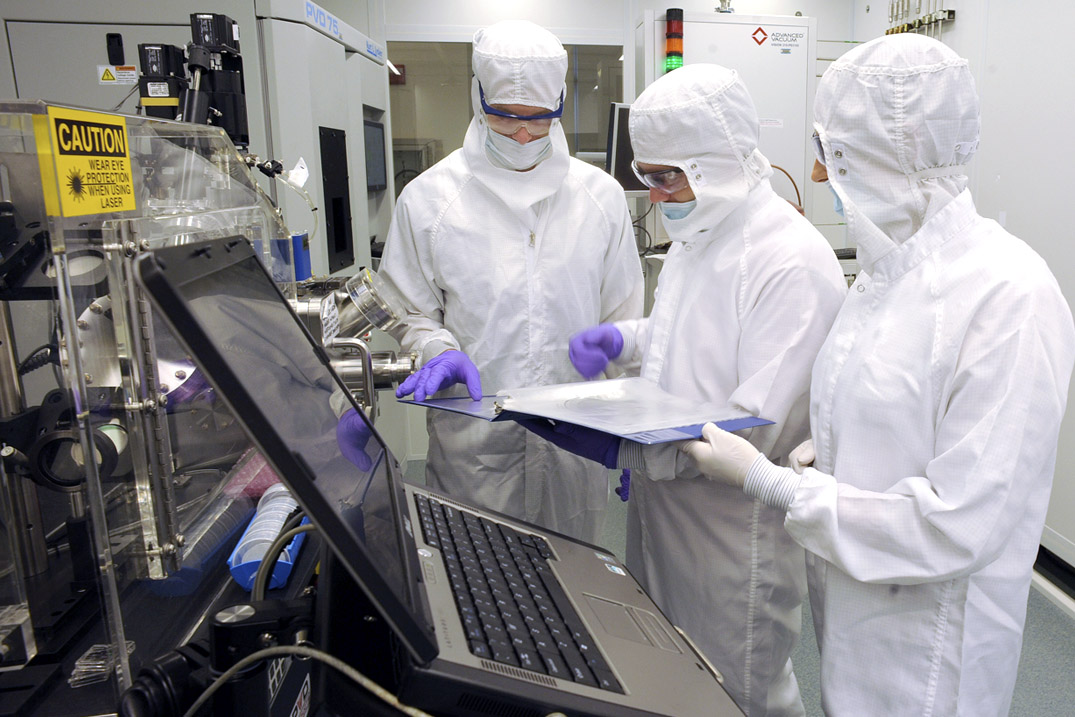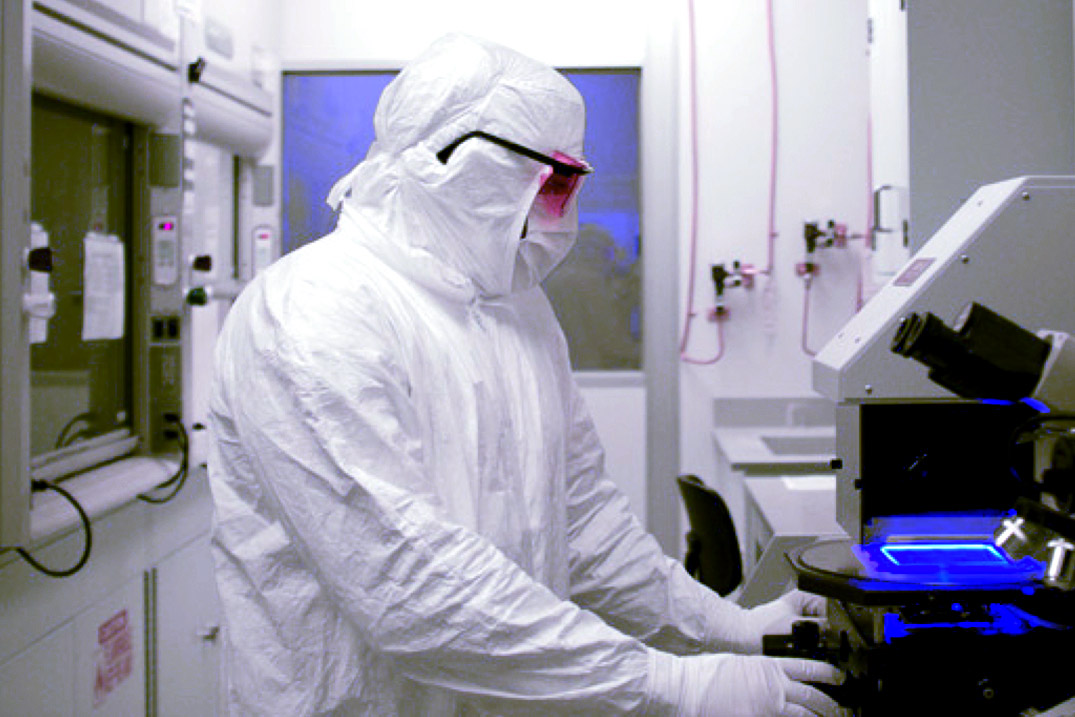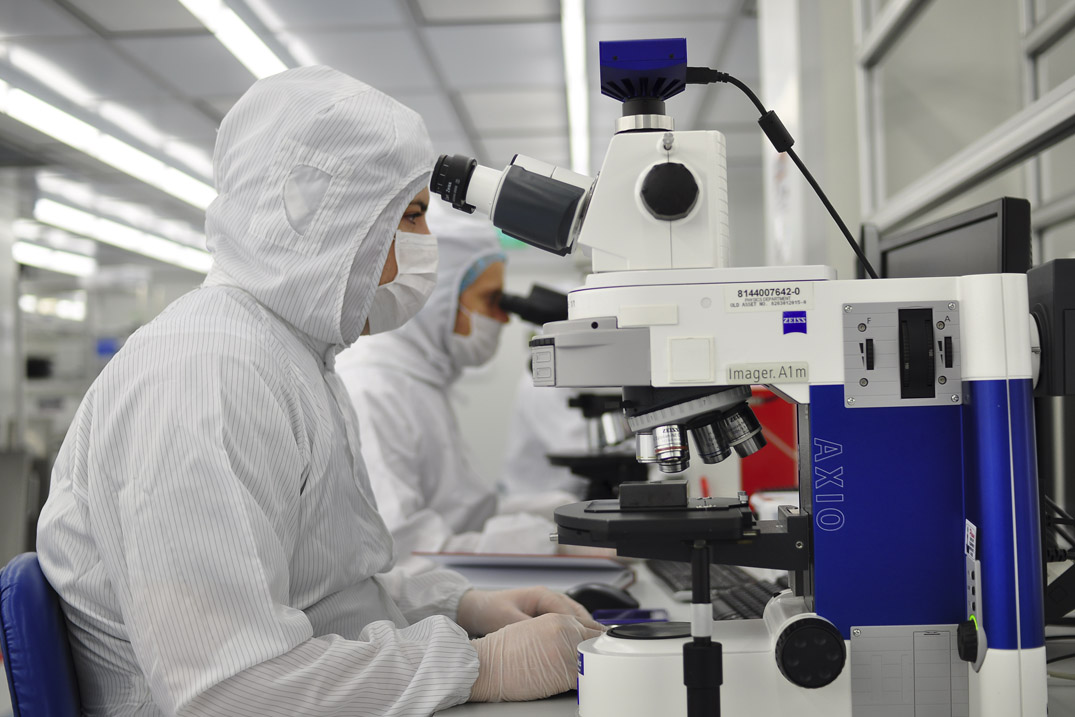Our Fabrication Facilities
Unique to our Center, we have a wide variety of cleanroom resources and expertise related to working with plastics for biomedical applications. Our Center relies on specialized equipment to fabricate and characterize devices across many different length scales, nm à mm, and using different materials, such as plastics, silicon, metals, and ceramics.
CBM2 welcomes collaborators to utilize the equipment and resources available to the Center. Our fabrication facilities are located at the University of Kansas-Lawrence (KU Nanofabrication Facility, KUNF), the University of North Carolina-Chapel Hill (Chapel Hill Analytical and Nanofabrication Laboratory, CHANL), and Louisiana State University (Center for Advanced Microstructures and Devices, CAMD). These facilities are staffed with experts in the area of micro- and nanofabrication and can service a host of users from different institutions. Staff is also available to instruct potential users on the operation of all equipment.
CHANL—UNC
CHANL was established in 2006 and operates as a shared instrumentation laboratory open to UNC researchers from all departments as well as to researchers from other universities, government labs, and industry. CHANL provides: (i) access to a suite of microscopy, fabrication, and spectroscopy tools, (ii) maintenance and repair of all equipment, (iii) training for students and postdocs, and (iv) technical support for researchers. CHANL serves over 300 researchers per year from UNC, other universities, government labs, and industry. Tools within this facility are anchored in a class 100 cleanroom and includes instruments for DRIE, PECVD, metal sputtering, e-beam evaporation, and a Karl Suss MA6 mask aligner system. CHANL also possesses a JenOptik HEX03 hot embossing system and a Resonetic laser ablation tool for rapid prototyping.

KU Nanofabrication Facility
The KU Nanofabrication Facility (KUNF) has 5,500 sq. ft. of space, which consists of class 100, class 1000 and class 10 000 space. The facility provides capabilities for photolithography, plasma (dry) etching, wet etching, metal and dielectric metal thin film deposition, electron microscopy, ellipsometry, and device characterization, laser ablation and engraving, 3D printing, and CNC machining. In addition, the facility has numerous microscopes for general inspection, ovens and furnaces, a dedicated gas storage room with safety cabinets, 4N house nitrogen in each room, ultrapure water, dedicated process fume hoods and filtered lighting for photolithography. The facility also has new nanoimprinting and hot embossing capabilities and a KERN precision micromilling machine that can rapidly prototype devices with dimensions down to 20 μm.
Contact: Ryan Grigsby, ryan.grigsby@ku.edu

CAMD —LSU
The Microfabrication staff provides expertise in processing, photolithography, thin film deposition, electroplating, and metrology. Microfabrication equipment has the capability to generate sub-micron structures in optical photoresist, based on the User's design, for creation of molds or x-ray masks. Optical masks with features as small as five micrometers are realized with the Mann pattern generator. Thin films can be deposited for many different metal layers through e-beam or sputter deposition. SEM analysis, interferometric capabilities, thermal analyses, and scanning tip measurements provide a variety of metrological tools for use by trained researchers.
CAMD also possesses a fabrication beam line to do X-ray lithography. The CAMD cleanroom is a 2,500 ft2 Class 100 facility. It is fully equipped to support LIGA-based microfabrication with state-of-the-art instruments. All utilities are supplied in a "through the wall" fashion into the cleanroom.
The Cleanroom staff aides in basic support of microfabrication and nanotechnology capabilities by providing infrastructure, environment, equipment and as well as education and training in these various fields. The major pieces of equipment available at this facility includes a Mann 600 pattern generator, Oriel UV exposure station, Quintel UL700-OBS Aligner and DUV exposure station, vacuum and convection ovens, e-beam deposition, and a suite of metrology tools.
